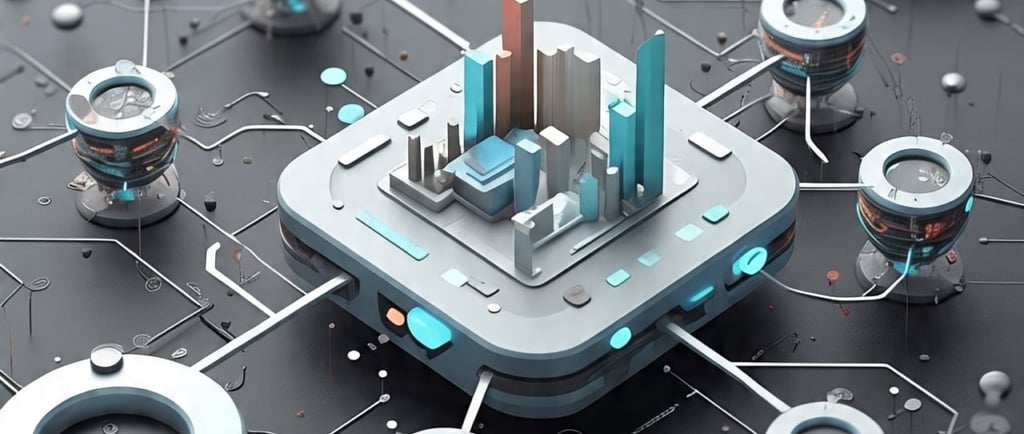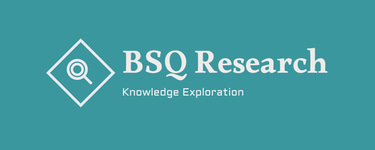Web3 and Agentic AI: A Perfect Match
How web3 and agentic AI will work together to build the future digital economy
AI AGENTSBLOCKCHAIN
7/3/20256 min read


Web3 and Agentic AI: A Perfect Match
The convergence of Web3 and agentic AI represents one of the most significant technological synergies of our time. While individually powerful, these technologies together create possibilities that neither could achieve alone, forming the foundation for autonomous digital economies that operate with unprecedented efficiency, transparency, and trust.
The Natural Alignment: Why They Complement Each Other
At their core, Web3 and agentic AI address complementary challenges in our digital infrastructure. Web3 provides decentralized, trustless systems where users maintain control over their data and assets, while agentic AI brings autonomous decision-making and intelligent automation to these systems.
At its core, the synergy between AI and blockchain is driven by a mutual need for decentralisation, transparency, and automation. Blockchain provides a tamper-proof ledger, while AI can process and interpret data at scale. Together, they unlock possibilities that were previously inconceivable.
This combination creates what experts are calling the "Post Web" stack—a new technological architecture optimized for AI-driven execution, coordination, and intent-based automation. Smart contracts, decentralized networks, and verifiable computation will remain. But now they are being optimized for AI-driven execution, coordination, and intent-based automation.
Solving Each Other's Adoption Challenges
Web3's User Experience Problem
One of the most compelling arguments for this technological marriage lies in how each technology solves the other's adoption barriers. Web3 has long struggled with complexity that prevents mainstream adoption. In practice, Web3 has revolutionized back-end systems. As yet, its technology remains too complex for the average user to handle. Smart contracts, self-custody, and bridging across chains, require time, effort, and technical understanding that most people simply don't have.
AI agents change this dynamic completely. Unlike humans, agents thrive in complexity. They can process vast amounts of information, automate intricate workflows, and operate seamlessly across decentralized networks. While human users struggle with onboarding, agents can directly integrate with smart contracts, optimize for efficiency, and execute transactions without friction.
AI's Trust and Execution Problem
Conversely, AI systems face significant challenges around trust, verification, and economic coordination. Today's AI models operate on probabilistic logic. Based on training data, they predict the next most likely outcome. However, economic transactions require certainty and enforceability: a bank transfer, legal contract, or trade must be executed with absolute finality.
Blockchain technology provides the missing piece. Smart contracts provide this missing piece. They offer immutable, self-executing agreements, allowing AI agents to conduct economic activity with complete transparency and verifiability. More importantly, decentralized ledgers ensure that agent-driven transactions are secure, permissionless, and trust-minimized, preventing manipulation or central control over digital economies.
Real-World Applications Already Emerging
The synergy between Web3 and agentic AI isn't theoretical—it's actively transforming multiple sectors:
Decentralized Finance (DeFi) Revolution
Projects like Ritual use programmable and autonomous AI agents to manage yield strategies, rebalance portfolios, and trigger smart contracts in response to live market data. These agents run 24/7 with no human oversight. For DeFi platforms, this means fewer risks, faster decisions, and lower operational costs.
AI agents are also revolutionizing cross-chain operations. Web3 apps now use AI agents to automate swaps, manage gas fees, and move assets between chains. These agents choose the best routes for users based on cost, time, and network health. This removes friction and saves money, especially in ecosystems with multiple chains like Ethereum, Arbitrum, and Solana.
Autonomous Governance Systems
Decentralized Autonomous Organizations (DAOs) are becoming truly intelligent through AI integration. AgentLayer enables DAOs to deploy AI agents that analyze proposals, summarize discussions, and offer data-driven voting suggestions. Instead of sifting through long forum threads, DAO members get quick insights to make informed choices.
Tokenized AI Economies
A compelling aspect of AI crypto agents is the synergy between blockchain and artificial intelligence, opening new possibilities for ownership and economic value. Blockchain technology, which underpins cryptocurrencies like Bitcoin, was the first tool to transfer monetary value via a decentralized network. Similarly, blockchain now enables tracking the ownership of AI agents, allowing transparent distribution of generated profits.
This creates entirely new economic models where token holders have rights to a share of the profits and can influence the agent's development. Through tokenized governance, users can allocate resources, implement new functionalities, or optimize existing ones. This democratizes innovation and creates a collaborative ecosystem where technological evolution and economic growth intertwine.
The Scale of Opportunity
The market is responding with remarkable enthusiasm. As of December, Web3 hosts approximately 10,000 AI agents, collectively earning millions of dollars each week from onchain activities, according to a report by VanEck. The asset manager expects upward of 1 million AI agents to populate blockchain networks by the end of 2025.
This growth represents more than just technological advancement—it signals a fundamental shift in how digital economies will operate. "The potential universe of AI agents interacting with crypto is infinite," Matt Hougan, asset manager Bitwise's head of research, told Cointelegraph.
Technical Innovations Driving Integration
Enhanced Smart Contracts
AI can enhance smart contracts by making them more responsive to real-world data. These smart contracts can automate complex actions like portfolio rebalancing or governance rules. Projects like Ritual and AgentLayer now use AI to run agents that make decisions based on live inputs without needing manual triggers.
Improved Oracle Systems
AI improves the quality and speed of oracle data. It can verify inputs, detect manipulation, and stream only trusted updates. Chainlink, along with newer tools like Lightchain AI, uses AI to boost the accuracy and trustworthiness of data feeds for smart contracts.
Machine Learning Integration
ML lets Web3 apps learn from data patterns without direct programming. It's widely used for fraud detection, wallet risk scoring, and predictive finance tools.
Overcoming Traditional Limitations
The combination addresses several critical limitations that have held back both technologies:
For Web3:
Complexity barriers: AI agents handle technical operations seamlessly
User onboarding: Automated systems manage wallet creation, gas optimization, and transaction routing
Scalability: Intelligent automation reduces network congestion and optimizes resource usage
For AI:
Trust and verification: Blockchain provides immutable records of AI decisions and actions
Economic coordination: Tokenized systems enable fair compensation and resource allocation
Decentralized governance: Community-driven development prevents centralized control
Future Vision: Autonomous Digital Nations
Looking ahead, the most ambitious projects are exploring how this synergy could create entirely new forms of digital governance. Citizens create agents that generate revenue across industries like trading, marketing, and e-commerce. This revenue is pooled and redistributed as Universal Basic Income (UBI). Decisions on agent funding and national priorities are made through citizen voting. LibriX shows how autonomous AI and blockchain governance can support a full digital economy without centralized control.
Challenges and Considerations
Despite the enormous potential, several challenges remain:
Technical Hurdles
Still, onchain AI models lag centralized counterparts, such as OpenAI's ChatGPT, on technical dimensions such as speed and computational power, Casey said. Creating viable decentralized AI agents depends on finding "decentralized solutions to ensure high-quality training data while safeguarding user privacy," Seraphine said.
Regulatory Landscape
"AI will face increasing pressure to be regulated, and big players like OpenAI are lobbying for rules that align with their own models," potentially disadvantaging decentralized AIs, Casey added.
Security and Privacy
Implementing AI agents in Web3 environments requires robust security frameworks to prevent exploitation while maintaining the privacy principles that make decentralized systems valuable.
The Inevitable Convergence
Web3 wasn't designed for humans at scale; it was built for machines. Its complexity has limited its adoption, but the "Post Web" stack is taking shape with AI agents emerging as autonomous economic actors.
This realization fundamentally changes how we think about both technologies. Rather than forcing human users to adapt to complex blockchain interfaces, we're creating systems where AI agents serve as intelligent intermediaries, making Web3 capabilities accessible while maintaining the benefits of decentralization.
For the first time, Web3 will have users who can fully leverage its capabilities. AI agents will seamlessly interact with decentralized infrastructure, allowing Web3 to operate at the scale it was always meant to.
Conclusion: Building the Autonomous Future
The convergence of Web3 and agentic AI represents more than technological evolution—it's the foundation for a new digital economy where intelligent systems operate autonomously while maintaining transparency, trust, and user sovereignty. This is not about adding AI on top of Web3. It's about building AI-native decentralized systems that are smarter by design.
As we move through 2025 and beyond, organizations that understand and leverage this synergy will have significant advantages in creating scalable, intelligent, and truly decentralized applications. The question isn't whether this convergence will happen—it's already underway. The question is how quickly we can adapt our thinking and infrastructure to fully realize the potential of these perfectly matched technologies.
The future belongs to systems that are both intelligent and decentralized, where AI agents and blockchain networks work together to create digital economies that are more efficient, equitable, and autonomous than anything we've seen before.
BSQ Research
Transforming businesses with cutting-edge AI research
© 2025. All rights reserved.
